Brown Pelicans display beauty during trying times
By Richard Bangert
About 100 California Brown Pelicans made an unusual appearance on the old wooden dock on the south side of Alameda Point near the U.S.S. Hornet on December 23. The visit provided a rare close-up view of this colorful and iconic bird, but also a reminder of their struggle to survive as a species. Only one of the pelicans could be identified as a one- or two-year-old.
During the past four years, the breeding rate for California Brown Pelicans has been dismal. This recent trend has been directly attributable to the dwindling supply of sardines along the California coast, according to a Brown Pelican status report issued in October by the Washington State Department of Fish and Wildlife. The sardine population has dropped so low that in April of 2015, the agency responsible for managing Pacific Coast fisheries banned commercial fishing of sardines until the end of June 2016.
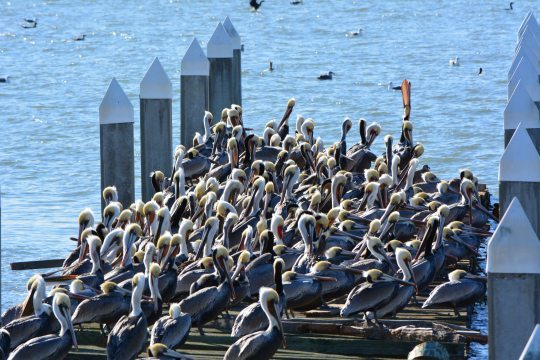
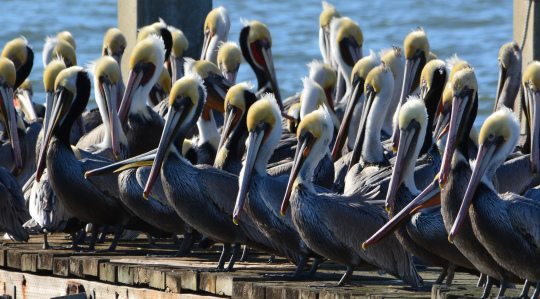
In May, the U.S. Fish and Wildlife Service urged the same agency to consider additional management measures to stave off a decline in northern anchovy, another important food source for pelicans and other marine life.
Brown Pelicans were removed from the federal endangered species list in 2009 with great fanfare after recovering from the devastating effects of the agricultural pesticide DDT on their eggs. But they no sooner recovered from chemical contamination than they fell victim to a plunge in food supply.
“Although most essential nesting and roosting habitat throughout the subspecies’ range is protected, the California Brown Pelican has experienced unusual mortality events and a multi-year decline in breeding success since delisting, both of which appear to be due to the lack of adequate forage,” wrote the U.S. Fish and Wildlife Service to the Pacific Fishery Management Council on May 14, 2015.
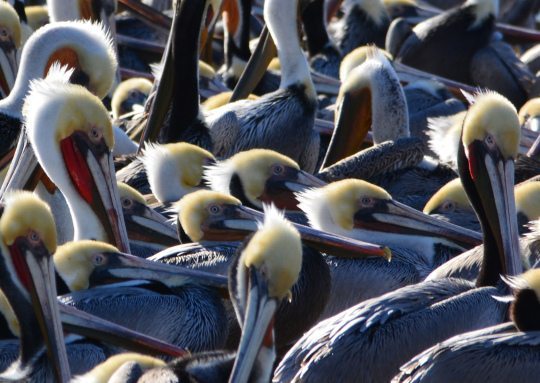
About 10 percent of California Brown Pelicans nest on two islands in Channel Islands National Park off the coast of Southern California. The remainder nest and rear their young off the western coast of Mexico.
The University of California at Davis and the Mexican national conservation agency conducted a study of the 2014 nesting season off the coast of Mexico. The U.C. Davis news summary of the study results stated, “The scientists found that this year, areas that typically host hundreds or thousands of nesting pairs held only a few hundred at most, and in some cases zero nesting pairs.”
The co-author of the study, U.C. Davis wildlife biologist Dan Anderson, is quoted in the story saying, “That’s what we call a failure, a bust. The bottom dropped out.” Anderson has been monitoring Brown Pelicans for 46 years.
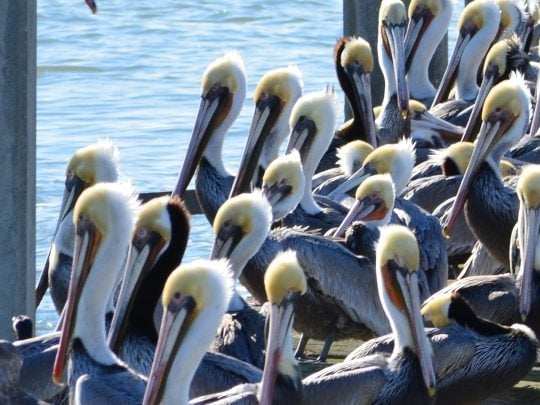
Breeding normally begins in January. Whether the pelicans currently at Alameda Point will make the journey south is yet to be seen.
Breakwater Island along the south side of the Alameda Point Channel serves as the most popular resting site for Brown Pelicans on San Francisco Bay during the warmer months.
Immature Brown Pelicans are distinguishable by being entirely brown, except for their whitish underbelly. By their third year, the neck becomes white and the head yellow. During breeding season, the neck of adults becomes dark chestnut and the pouch under their bill becomes red.
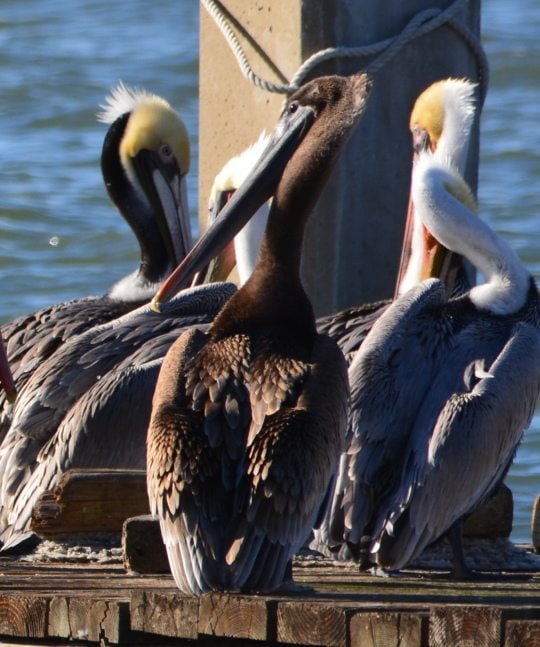
Further reading:
“Periodic Status Review for the Brown Pelican,” October 2015, State of Washington Department of Fish and Wildlife.
“Failure to launch: California brown pelicans’ breeding rate dismal,” June 2, 2014, UC Davis News and Information.
“Letter from U.S. Fish and Wildlife Service to Pacific Fishery Management Council,” May 14, 2015.
————————————————-
Editor’s Note: This article was reprinted with permission from Alameda Point Environmental Report, Richard Bangert’s blog. You can see some more pelican photos from December 23 on his blog.
